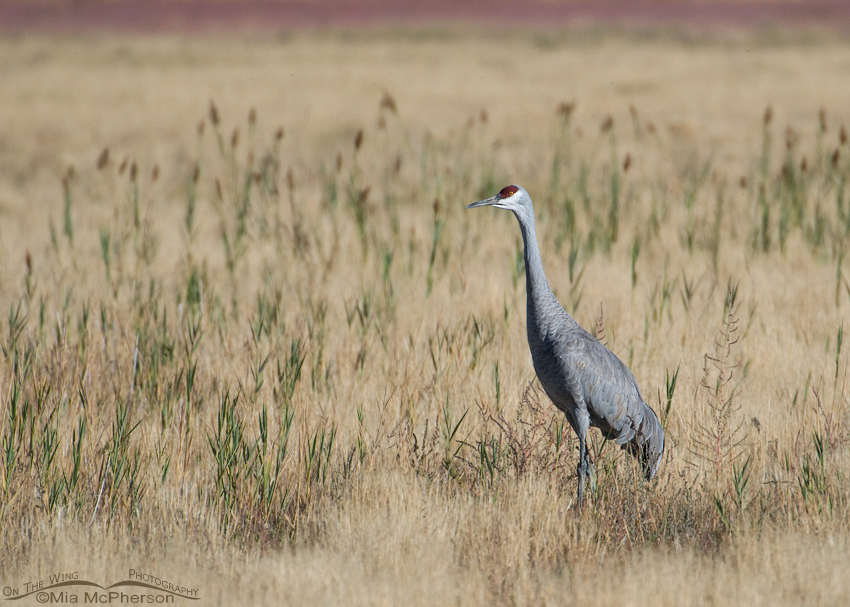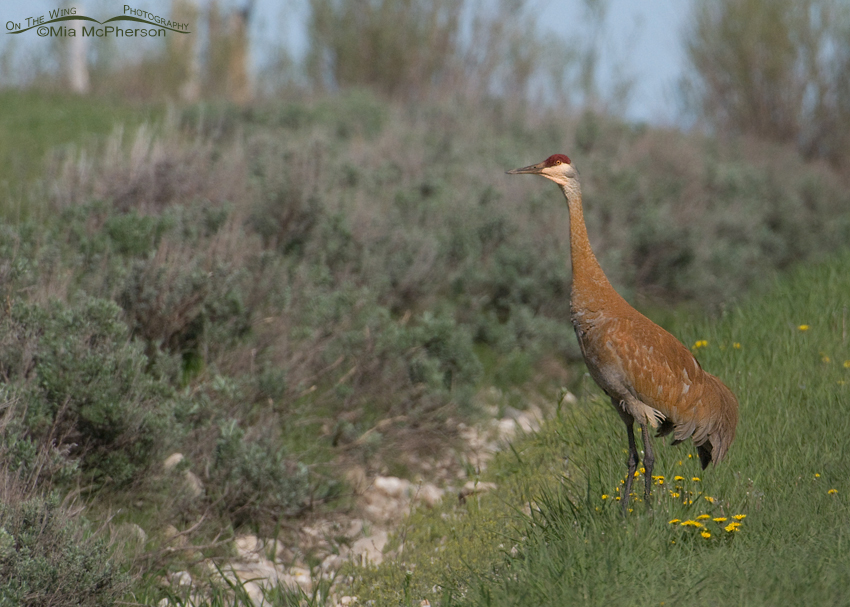 “Unstained” adult Sandhill Crane – Nikon D300, f6.3, 1/2000, ISO 640, Nikkor 200-400mm VR with 1.4x TC at 400mm, natural light
“Unstained” adult Sandhill Crane – Nikon D300, f6.3, 1/2000, ISO 640, Nikkor 200-400mm VR with 1.4x TC at 400mm, natural light
A few days ago I saw quite a few Sandhill Cranes starting at just past the Visitors Center for Bear River National Wildlife Refuge, in one of the farmer’s fields I saw 11 of them feeding in the freshly tilled soil. I didn’t take any images of them because there were too far away and the sun hadn’t yet fully risen. Later on I spotted two more Sandhill adults in a field that I did take images of even though I would have preferred them to be closer. During this time of the year many of the Sandhill Cranes I see are mostly soft mousey gray in color but…
 “Stained” adult Sandhill Crane – Nikon D300, f8, 1/1600, ISO 640, Nikkor 200-400mm VR with 1.4x TC at 400mm, natural light
“Stained” adult Sandhill Crane – Nikon D300, f8, 1/1600, ISO 640, Nikkor 200-400mm VR with 1.4x TC at 400mm, natural light
They can look like they are anywhere from drab clay colored to cinnamon rufous because their plumage gets stained by water, vegetation and mud. Sandhill Cranes intentionally rub their plumage with soil and the color of the soil can determine what color the stain becomes. A freshly molted crane will appear pale to slate colored gray. Normally the stains are mid-neck or below but the crane above shows staining up the neck into the chin and upper throat.
I thought photos comparing stained and unstained Sandhill Cranes would be interesting for my viewers who aren’t familiar with them.
Stained or unstained I think Sandhill Cranes are quite lovely for living fossils.
Life is good.
Mia
Click here to see more of my Sandhill Crane photos plus facts and information about this species.


wow, simply wonderfull !! the 1st have a beautifull contrast with the color vegetation around
Bravo Mia =)))
Awesome post on the Cranes! Wonderful photos, Mia!
Very neat, Mia. I love that both photos show postures that are nearly identical. How did you manage that?!!
I saw some cranes up north this summer that were the most rusty I’ve ever seen them. It got me very excited, besides the fact that they were tundra cranes.
Beautiful photos of the Cranes, Mia.
This is something new to me. I enjoy learning from your posts in general and specifically about the nearby Bear River Migratory Bird Refuge. Thank you Mia.
What an incredible bird. Do you know why they rub their plumage with soil? Does it relieve mite infestation, or is there some other reason?
I do like hearing of ‘evolutionary success stories’ where the original design continues to function to this day. Thank you.
Nice and beautiful Cranes.